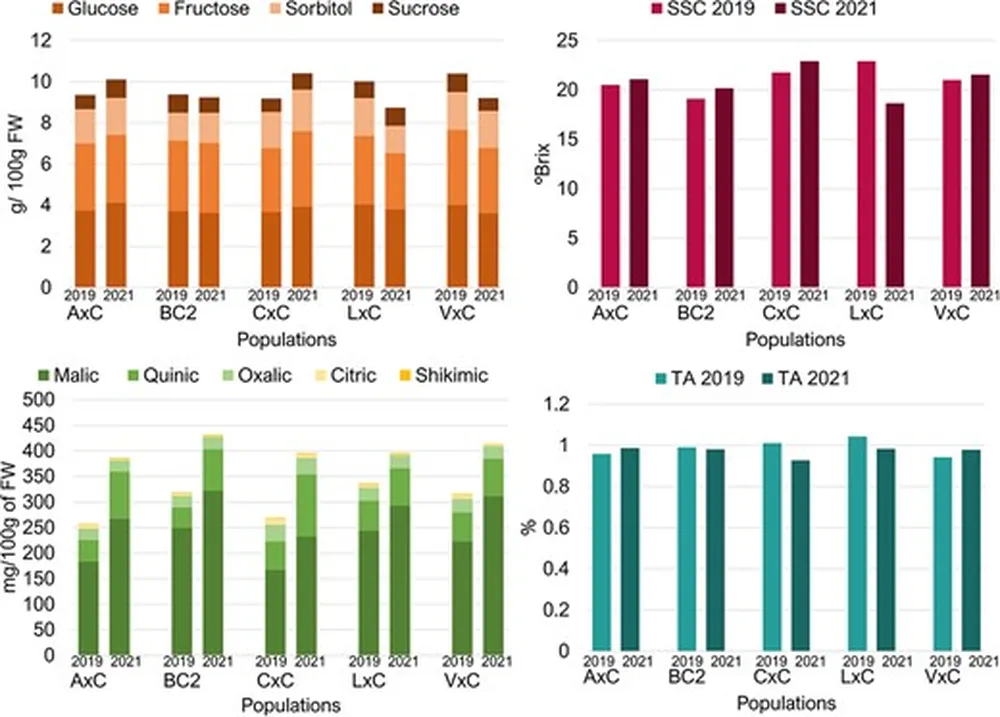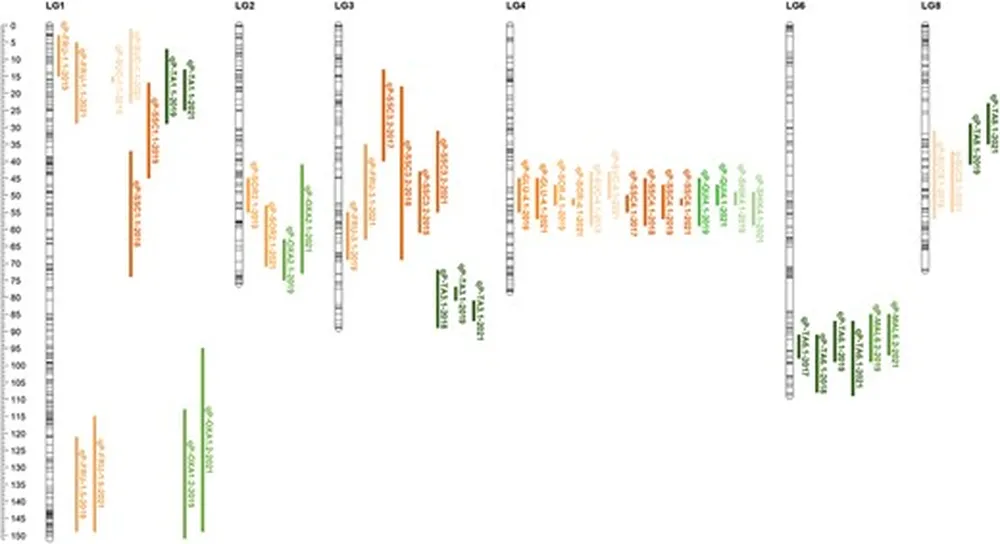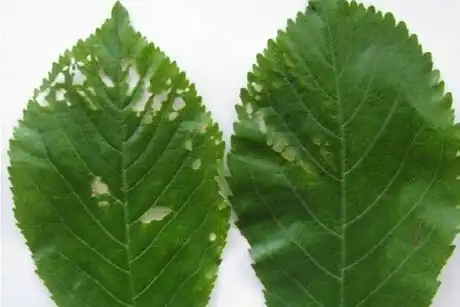Sweet cherry research
Sweet cherries are appreciated by consumers around the world for their appearance and, above all, their flavor, which is characterized by the perfect balance of sweetness and acidity.
Researchers are constantly seeking new varieties that, through genetic selection, meet increasingly higher quality standards. This is precisely what researchers from the University of Zaragoza, the IRTA and CITA research centers (all based in Spain), and Clemson University in the United States have done.
Their study explored the genetic factors underlying key elements that influence the flavor of sweet cherries, including sugar and acid content.
Analysis of cherry compounds
Over the course of two years, the researchers sampled cherries from five different cherry populations (a total of 372 fruits analyzed) to measure parameters such as soluble solids content and acidity.
In addition, the amounts of individual sugars (glucose, fructose, sorbitol, and sucrose) and organic acids (malic, quinic, oxalic, citric, and shikimic) were measured using advanced liquid chromatography techniques.
Among the sugars, glucose and fructose were the most abundant, while malic acid was the predominant organic acid.
 Image 1. Averages of sugar content (glucose, fructose, sorbitol and sucrose), soluble solids content (SSC), organic acid content (malic, quinic, oxalic, citric and shikimic) and titratable acidity (TA), in the study populations (A × C, BC2, C × C, L × C, V × C), over two years (2019 and 2021).
Image 1. Averages of sugar content (glucose, fructose, sorbitol and sucrose), soluble solids content (SSC), organic acid content (malic, quinic, oxalic, citric and shikimic) and titratable acidity (TA), in the study populations (A × C, BC2, C × C, L × C, V × C), over two years (2019 and 2021).
Study findings
The study revealed that sorbitol and malic acid were the most stable compounds over the years and exhibited the highest heritability, showing the strongest genetic connection to key traits related to sweetness and acidity.
Strong correlations were observed between the sugar profiles and sweetness, as well as between the organic acid profiles and acidity, although notable variability was found between the years.
To better understand the genetics behind these traits, the researchers used a technique called Quantitative Trait Loci (QTL) mapping.
Genetic implications
They identified 20 QTLs that were consistent over the two years, revealing regions of the cherry genome that influence sugar and acid content.
Some QTLs overlapped, suggesting that factors such as the timing of fruit ripening influence sugar and acid levels.
The study also identified specific gene regions that could be useful for selecting sweeter cherries.
 Image 2. Genetic position (cM) on the consensus linkage map [ 27 ] of stable and significant SSC and TA QTL, sugars (glucose, fructose, sucrose and sorbitol) and acids (malic, quinic, oxalic, citric, shikimic QTL.
Image 2. Genetic position (cM) on the consensus linkage map [ 27 ] of stable and significant SSC and TA QTL, sugars (glucose, fructose, sucrose and sorbitol) and acids (malic, quinic, oxalic, citric, shikimic QTL.
Conclusions and future perspectives
In conclusion, this work identified genomic regions associated with sugar and organic acid content, which contribute to sweetness and acidity in cherries, providing valuable insights for breeding programs.
Although various factors such as environmental conditions and fruit ripening stages strongly influence sugar and organic acid levels in cherries, the wide segregation of these compounds within populations and the presence of stable QTLs across the two studied years demonstrate the potential for selection to improve these traits.
The major QTL regions and hotspots identified here can aid in the development of selection tools for cherry quality, a fruit that shows differences in sugar and acid content compared to other climacteric stone fruits.
Moreover, to further explore the genetic control of these compounds and identify and validate candidate genes within the major QTL intervals, transcriptomic analyses of sweet cherry fruits at various ripening stages are currently underway.
Source: Clara Gracia, Alejandro Calle, Ksenija Gasic, Esther Arias, Ana Wünsch, Genetic and QTL analyses of sugar and acid content in sweet cherry (Prunus avium L.), Horticulture Research, Volume 12, Issue 2, February 2025, uhae310, https://doi.org/10.1093/hr/uhae310
Images: Grazia et al., 2025; SL Fruit Service
Melissa Venturi
University of Bologna (IT)
Cherry Times - All rights reserved












